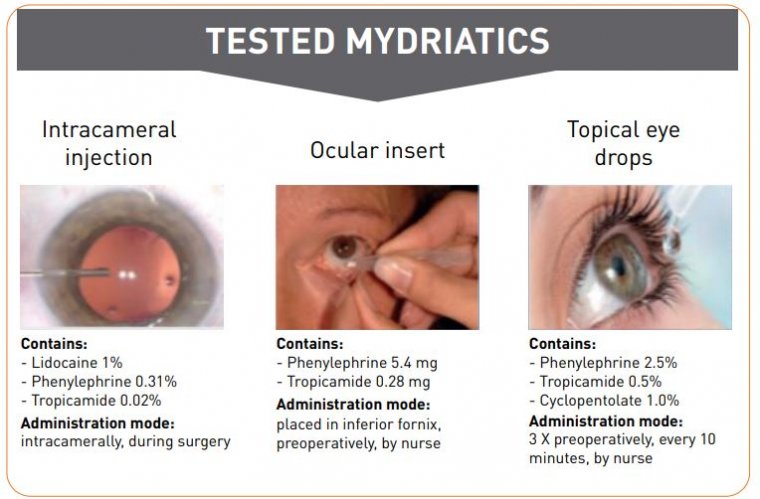Mydriasis, or pupil dilation, is a critical aspect of ocular surgery, providing surgeons with an optimal view of intraocular structures. Achieving adequate mydriasis enhances surgical precision, reduces the risk of complications, and facilitates safe intraoperative maneuvers. Pharmacological agents and mechanical devices aid in maintaining stable dilation, but various challenges, such as intraoperative floppy iris syndrome (IFIS) or pharmacologic resistance, can complicate procedures. This article explores the role of mydriasis in ocular surgery, its management, and potential complications.

The Role of Mydriasis in Ocular Surgery
Surgical mydriasis is essential for various ophthalmic procedures, particularly:
- Cataract surgery – Provides a clear view of the crystalline lens for phacoemulsification.
- Vitrectomy – Ensures visibility of the posterior segment.
- Corneal transplant procedures – Prevents iris prolapse and optimizes graft placement.
Inadequate dilation can hinder visualization, prolong surgery, and increase intraoperative risks.
Mechanisms of Mydriasis in Ophthalmic Surgery
Pupil dilation is controlled by the balance between two opposing muscle groups in the iris:
- Sympathetic stimulation contracts the dilator pupillae muscle, widening the pupil.
- Parasympathetic inhibition prevents constriction by the sphincter pupillae muscle.
- Pharmacological agents manipulate this balance to induce and maintain mydriasis during surgery.
Pharmacological Agents for Surgical Mydriasis
1. Mydriatic Eye Drops
- Phenylephrine (α-adrenergic agonist) – Stimulates the dilator muscle.
- Tropicamide (anticholinergic agent) – Inhibits the sphincter pupillae muscle.
- Cyclopentolate – Provides longer-lasting mydriasis for extended procedures.
2. Intraoperative Mydriatic Agents
- Intracameral epinephrine – Maintains dilation and counteracts IFIS.
- Lidocaine (intracameral anesthesia) – Reduces iris sphincter response to surgical stimuli.
3. Sustained-Release Mydriatics
- Omidenepag isopropyl (prostaglandin analog) – Newer agents offering prolonged dilation.
Challenges and Complications of Mydriasis in Ocular Surgery
1. Intraoperative Floppy Iris Syndrome (IFIS)
- Common in patients using tamsulosin (alpha-blockers) for benign prostatic hyperplasia.
- Features: Poor dilation, iris prolapse, and excessive fluttering.
- Management: Intracameral phenylephrine, iris hooks, or pupil expansion rings.
2. Pharmacologic Resistance to Mydriatics
- Seen in patients with diabetes, pseudoexfoliation syndrome, or chronic miotic use.
- Alternative strategies: Higher mydriatic doses, intracameral drugs, or mechanical devices.
3. Toxic Effects of Mydriatics
- Corneal endothelial toxicity from excessive exposure to preservatives in drops.
- Systemic absorption may cause hypertension (phenylephrine) or tachycardia.
Mechanical Devices for Intraoperative Pupil Dilation
When pharmacological mydriasis is insufficient, pupil expansion devices provide structural support:
- Iris hooks – Used in cases of poor pharmacologic dilation.
- Malyugin ring – A flexible device used in IFIS cases to stabilize the pupil.
- Pupil expansion rings – Maintain a round pupil shape during surgery.
Postoperative Considerations and Pupil Recovery
- Transient mydriasis may persist for 24–48 hours after surgery.
- Persistent dilation may indicate surgical trauma to the iris sphincter.
- Miosis management: Pilocarpine drops can help restore normal pupil size if excessive dilation persists.
Mydriasis is an essential component of ocular surgery, enabling better visualization and safer procedures. Pharmacologic agents and mechanical interventions help maintain adequate dilation, though certain conditions like IFIS or pharmacologic resistance pose challenges. Careful patient assessment, appropriate mydriatic selection, and intraoperative management strategies ensure optimal surgical outcomes.

